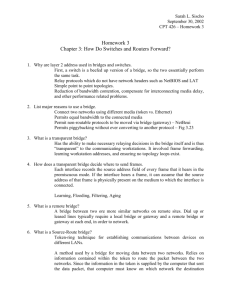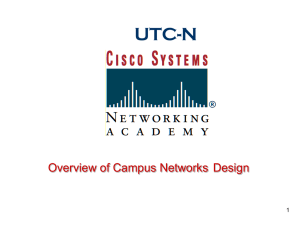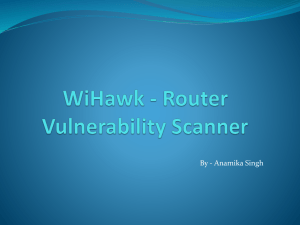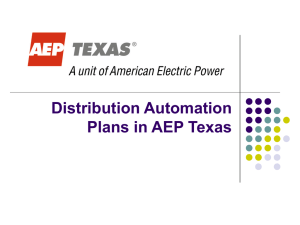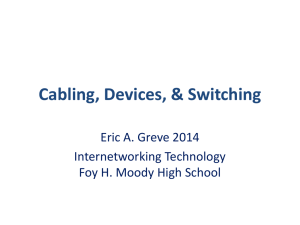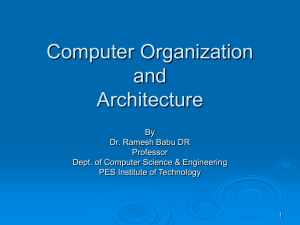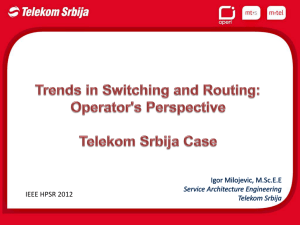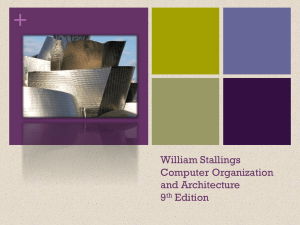Layer 3 Switching - Columbus State University
advertisement
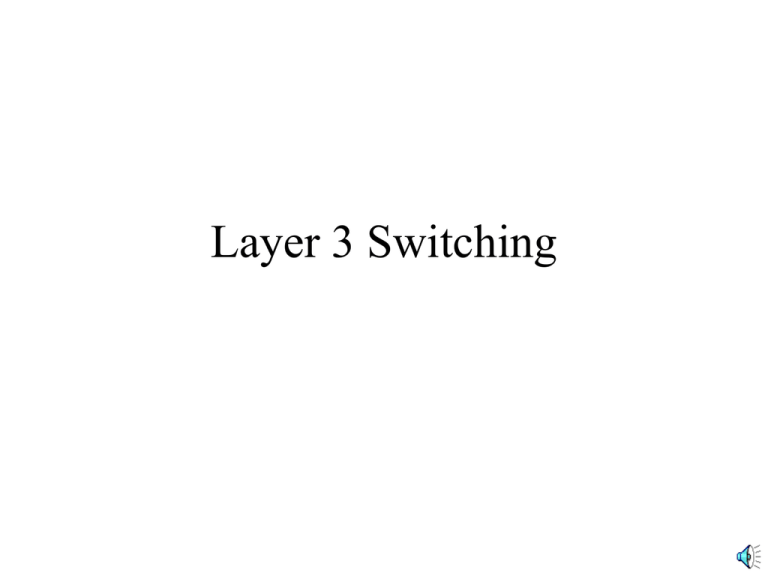
Layer 3 Switching Routers vs Layer 3 Switches • Both forward on the basis of IP addresses • But Layer 3 switches are faster and cheaper • However, Layer 3 switches are more limited – Usually do not support WAN connections and only Ethernet for LANs – Usually support only TCP/IP and sometimes IPX/SPX, not SNA, AppleTalk, etc. • There are other differences as well Routers • Forward each packet independently – Ignore previous IP packets to the same destination – Make a full router forwarding decision (Ch. 3) for each arriving IP packet – This takes a great deal of processing time – This makes routers slow and inexpensive – However, this allows routers to adjust rapidly to failures Layer 3 Switches • Do NOT forward each packet independently – For instance decision caching; Remember previous decisions based on IP address – No need to make a full router forwarding decision (Ch. 3) for each arriving IP packet – This saves a great deal of processing time – This makes Layer 3 switches fast and inexpensive – However, this may make failure recovery slow Routers • IP being extended with MultiProtocol Label Switching (MPLS) – A label is added to each packet – Packets that should follow the same route get the same label value – Router learns output port for each label value – When packet arrives, send it back out the correct port without a full router forwarding decision using routing tables Routers • Traditionally used a Bus Architecture – Interfaces are connected to the processor via a serial bus like the bus in a PC – The processor and the bus can become bottlenecks Processor Interface Bus Interface Routers • Traditionally used a Bus Architecture – Busses only handle one transmission at a time – Processors only handle one packet at a time – Problem if there are several interfaces Processor Interface Bus Interface Routers • Traditionally used a Bus Architecture – – – – Each packet has to pass over the bus twice From the incoming interface to the processor From the processor to the outgoing interface This ties up the router for two bus cycles Processor Interface Bus Interface Layer 3 Switches • Interfaces are intelligent – Make forwarding decisions independently – So no single processor bottleneck Decision Interface IP Packet Interface Switching Matrix Interface Interface Layer 3 Switches • Interfaces are Intelligent – Can handle forwarding decisions simultaneously, reducing processing delays Decision Interface IP Packet Interface Switching Matrix Interface Decision Interface Layer 3 Switches • Interfaces are Connected by a Switching Matrix – Forward packet within frame directly to outgoing interface – No bus Interface IP Packet Interface Switching Matrix Interface Interface Layer 3 Switches • Interfaces are Connected by a Switching Matrix – Can handle multiple frame forwardings simultaneously Interface IP Packets Interface Switching Matrix Interface Interface Routers • Traditionally Did all Processing in Software – Software is slow • Many commands may be needed to execute router forwarding decisions • Must be executed one at a time • These will take a long time to execute – In contrast, hardware is fast • Many processes can be executed in parallel • Reduces number of cycles Layer 3 Switches • In some Layer 3 switches, ASICs handle some or all processing – Application-Specific Integrated Circuits – Designed for particular applications, such as routing – Much faster than software – Can only handle processes of medium complexity – Layer 3 switching’s reduced protocol support allows ASICs to be used there Layer 3 Switches • ASIC Technology is Receiving Competition from Network Processors – ASICS are purely hardware – Network processors are programmable but have hardware optimized for network functions – Network processors are slower than ASICs but much faster than software processes on general routers – Network processors can be programmed for specific functions less expensively than ASICs can be built Routers • Adopting Many Speed Switch Innovations – Some use decision caching – MPLS is already being used somewhat – Switching matrices – Uses some ASICs in processing; Will use more as ASIC technology becomes able to support more processing – Limited protocol support may become the only enduring Layer 3 switch distinction
